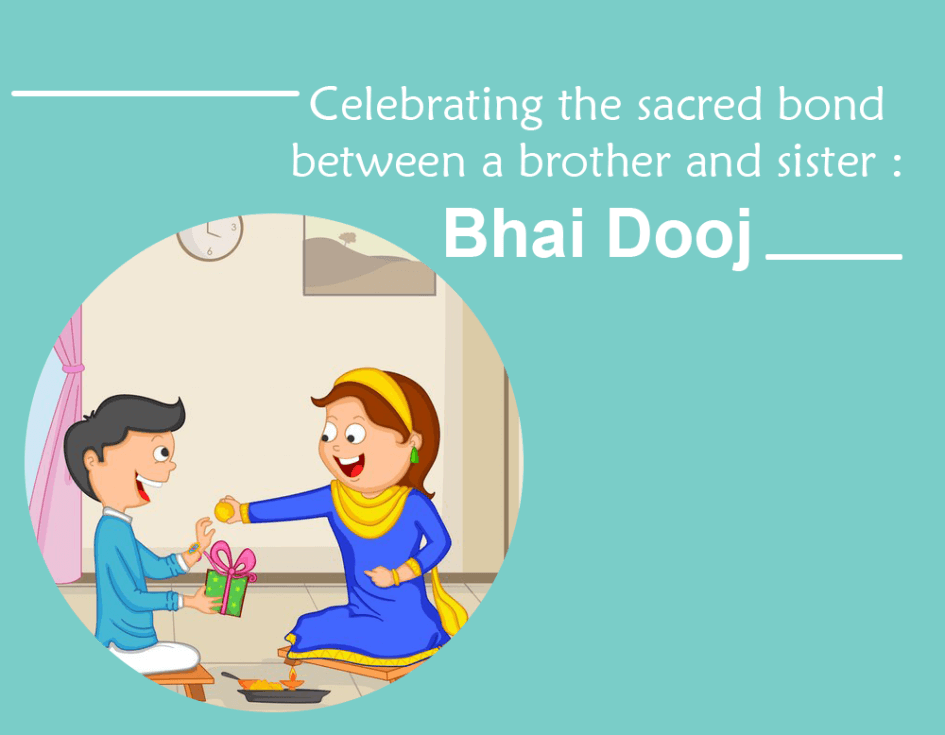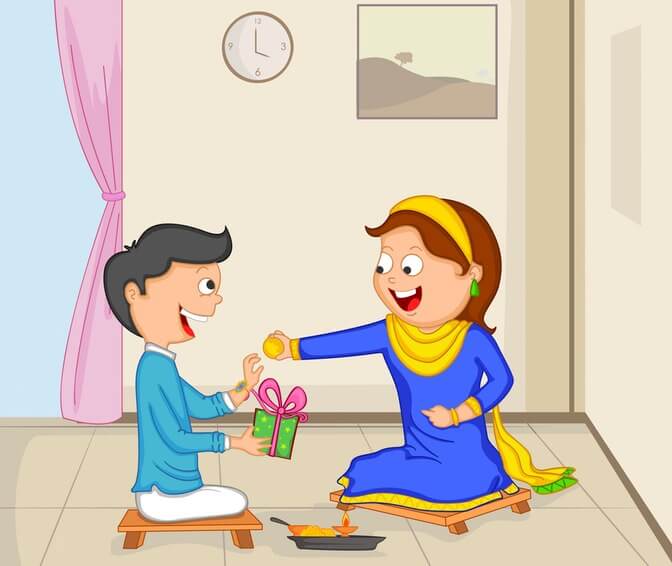Bhai Dooj 2019
The 3rd day of the Kartik month or the second day after Diwali is celebrated with zeal in India and Nepal. The day is commonly called as ‘Bhai Dooj’ among the Hindi language speakers but India is a mosaic of languages and cultures so it obviously has many other names as well. India is a land where language and traditions changes with one step at a time. People have adapted slightly different ways to celebrate this sacred day keeping in mind their historical, mythological, social and political scenario of the place.
This year Bhai Dooj falls on 29th October 2019
In West Bengal, the second day after the Kali Puja echoes with the sound of conch shells which is the sign of celebrating ‘Bhai Phota’; as they call it traditionally. Sister applies Tilak which is made up of chandan, kaajol and dahi on her brother’s forehead while chanting the Bhai Dooj mantra and ask for his well-being.
In Nepal, it is referred to as ‘Bhai Tikka’, the purpose behind celebrating this festival there goes back to an old tale which tells us about a sister who once saved his brother by applying Tilak on his forehead. Since the day, Yamraj is being worshipped so that he would remain glad with the siblings.
In the Marathi speaking areas, they cherish this day believing that like once Lord Krishna ate a bitter fruit and came back to meet her sister, Shubhadra after killing the demon, Narakasur and she applied Tilak on his forehead as the gesture of welcoming him and appreciating him for the victory and motivating him for his future ventures, in the same way, brothers are made to eat a bitter fruit and then Tilak is applied on their forehead by their sisters. It is beautifully called as ‘Bhaubeej’ in Maharashtra.
The Punjabi community marks the auspicious day on their calendars as ‘Tikka’ and the paste they make for the Tilak is the mixture of saffron and rice.
There is a Sanskrit Shloka that one can chant in order to invoke the power of Vedas: “Bhratus tabaa grajaataaham, Bhunksa bhaktamidam shuvam Preetaye yama raajasya Yamunaah Visheshatah.”
The legend talks about Lord Yama, the God of death. He was a busy man, so engrossed in taking away lives that he had almost forgotten he had one, too. People started giving him unwelcome gestures because of his very profession but his sister always insisted him on visiting her, so one fine day, he went to meet her. On asking for a gift, she asked him to visit her every year on this day. Hence, the custom began.
One thing that remains constant in spite of changing customs with the blink of an eye is the feeling behind the festival. Tied by the same knot of blood, that is bound to move freely yet it comes back every time drenching itself with the remembrance of a sacred bond. The blood doesn’t bind them together always but sometimes it is the mere idea that their veins carry a divine connection which goes back to the same life source.
Image Source: 1

